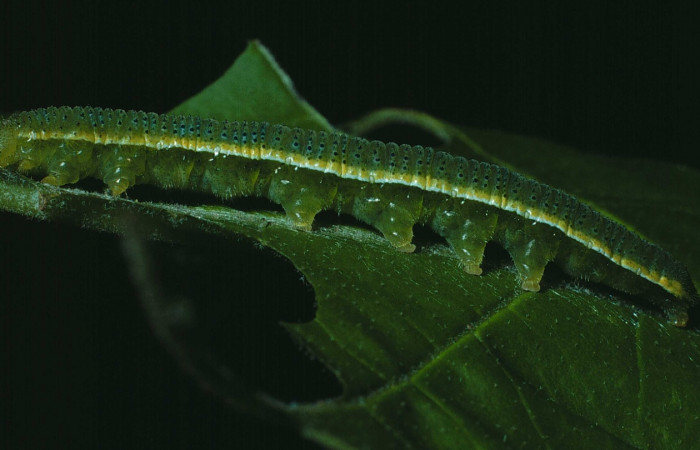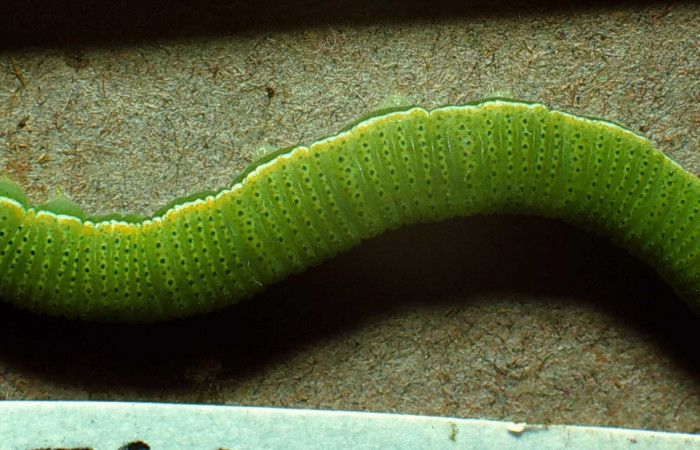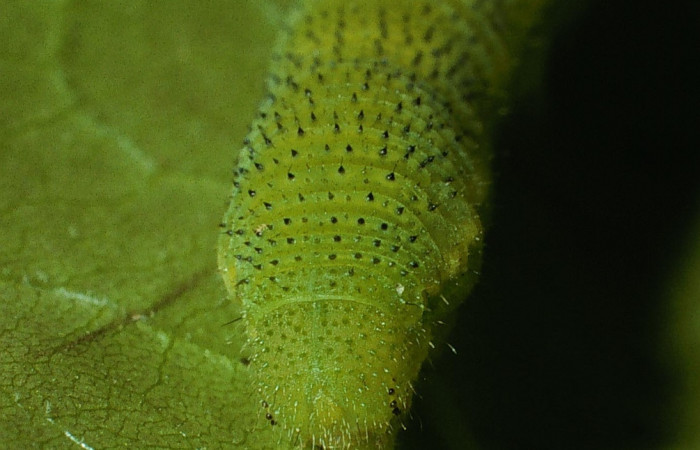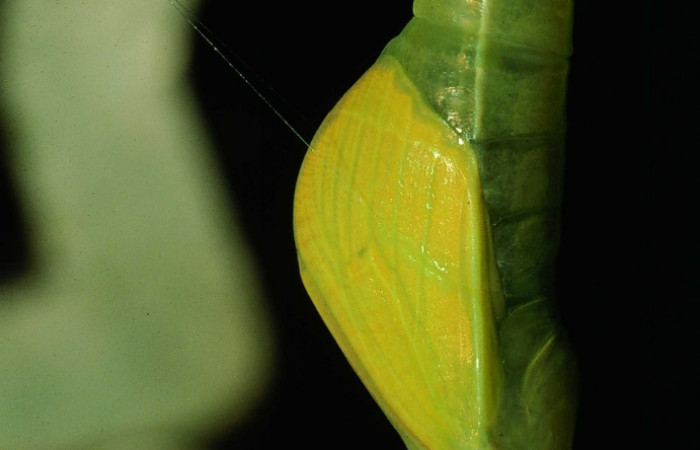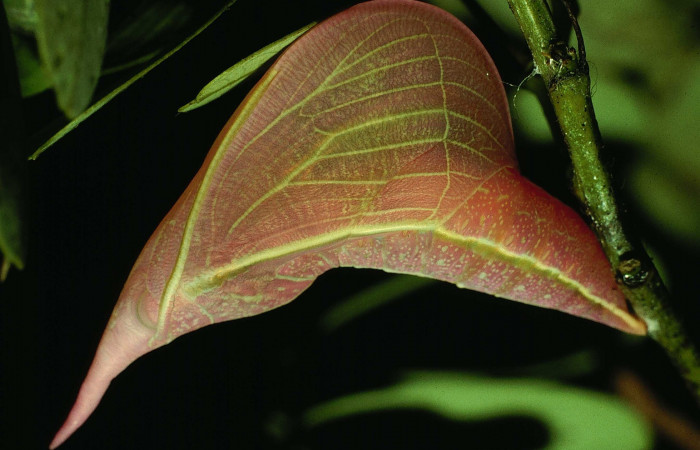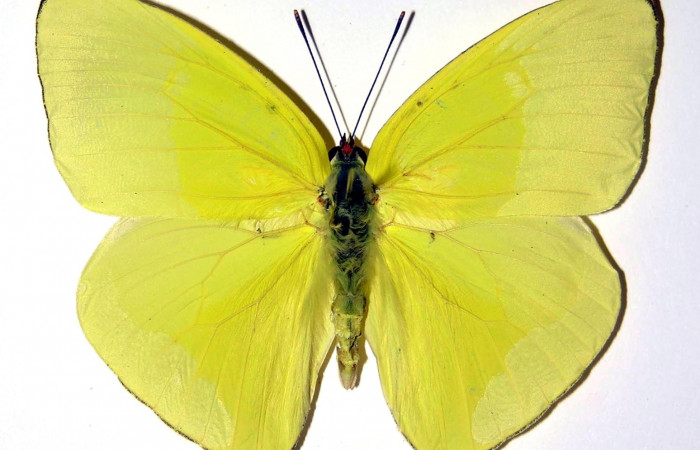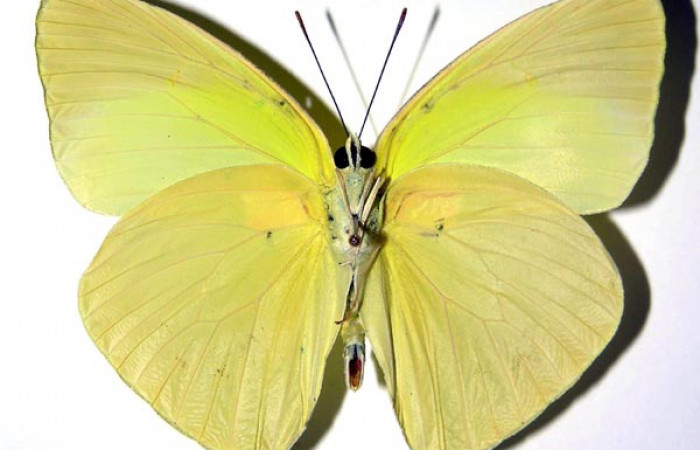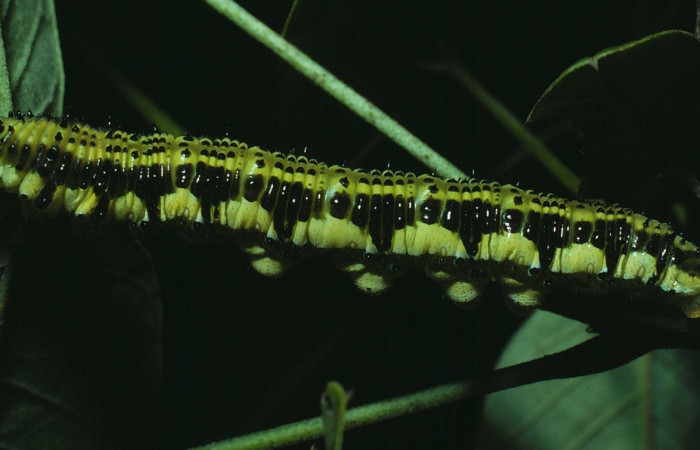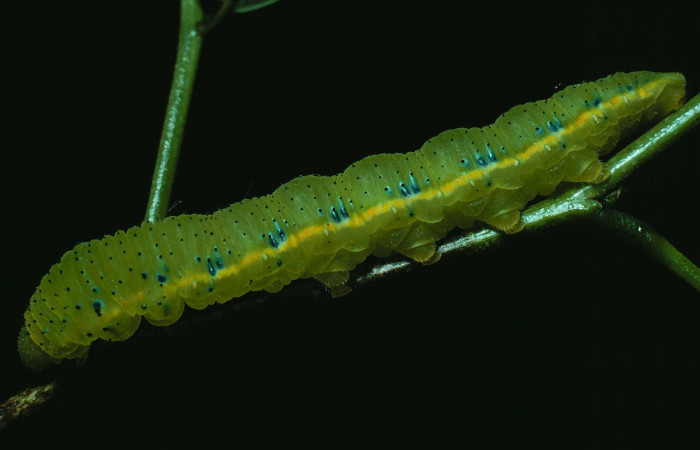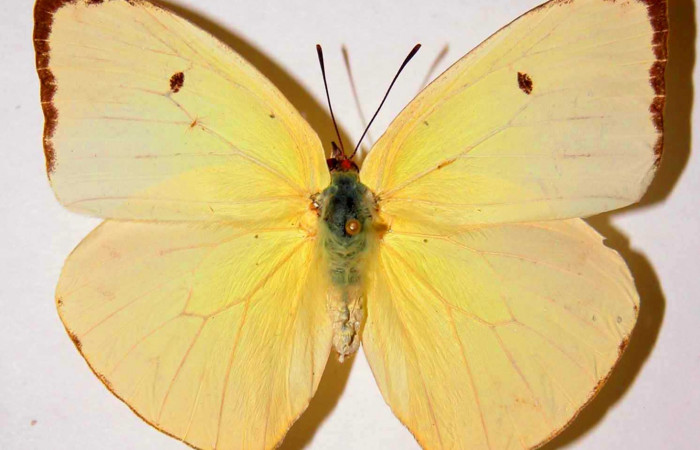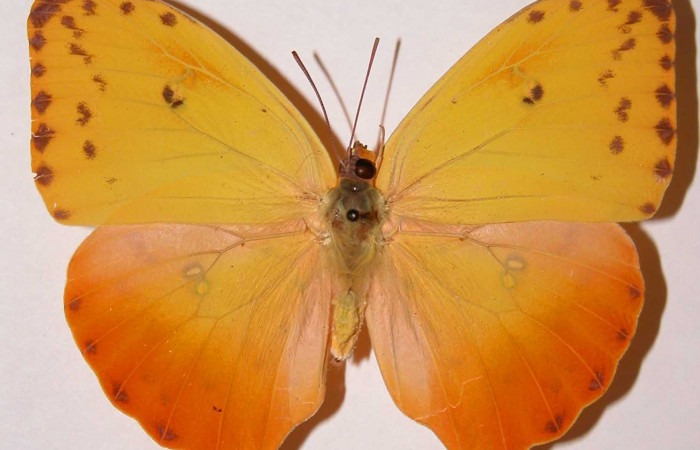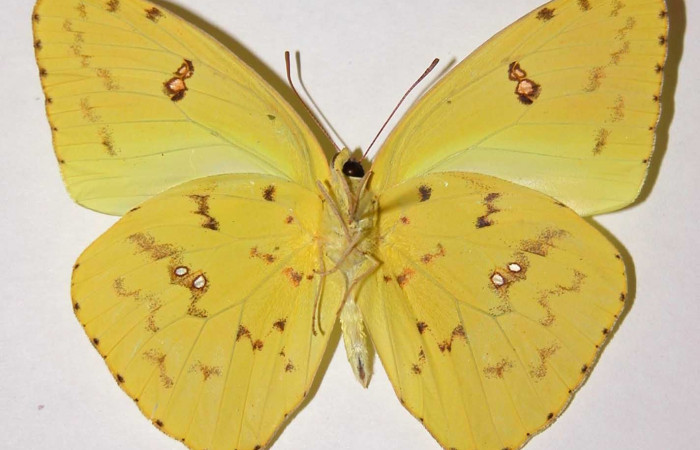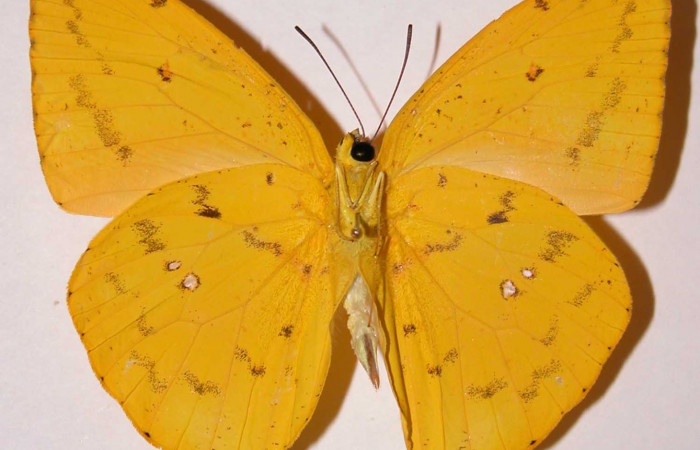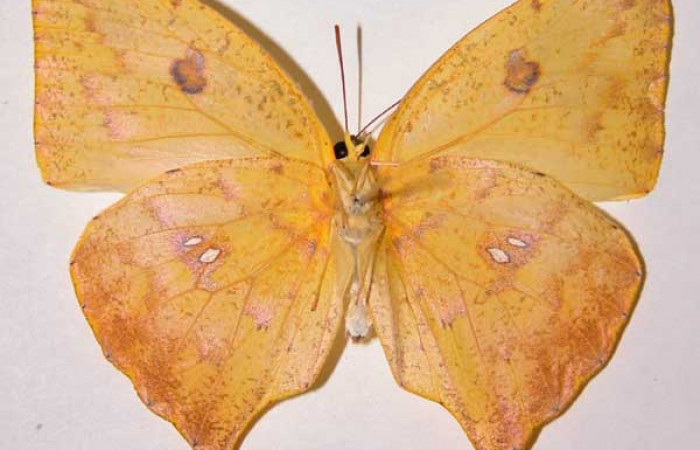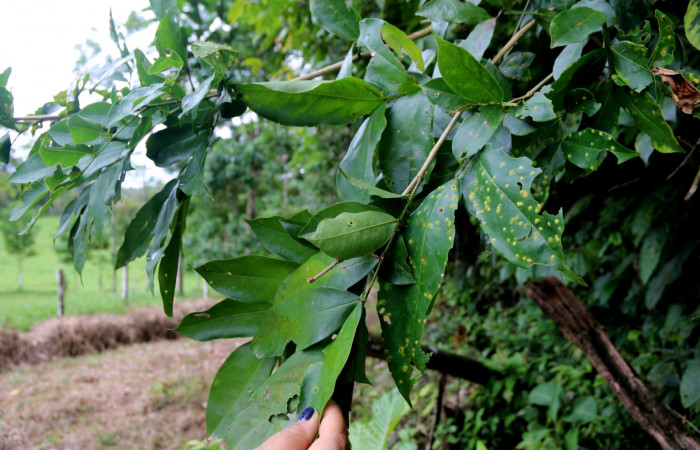Información taxonómica
Filo: Arthropoda
Clase: Insecta
Orden: Lepidoptera
Familia: Pieridae
Subfamilia: Coliadinae
Género: Phoebis
Especie: P. statira
En todos los años de investigación en el Área de Conservación Guanacaste (ACG) por el Dr. Daniel Janzen, la Dra. Winnie Hallwachs, y los Pararataxónomos y Parataxónomas se ha hecho un inventario de larvas de mariposas a lo largo de más 30 años, donde se encuentran registro de esta larva Phoebis statira de la familia Pieridae, (Fig.1).
Hay 270 registros en la base de datos, el primer registro fué encontrado el 16 de mayo de 1978 a 10msm de elevación, alimentándose de la familia de plantas Bignoniaceae, Xylophragma seemannianum, eclosionó el 23 de mayo de 1978.
 Fig. 1. Vista lateral de Phoebis statira, (Pieridae). Voucher: 83-SRNP-675-DHJ5540.jpg
Fig. 1. Vista lateral de Phoebis statira, (Pieridae). Voucher: 83-SRNP-675-DHJ5540.jpg
Los Pieridae Phoebis statira es una larva de hábitos diurnos (Fig. 1), en parte de su metamorfosis como larva es verde, con una línea amarilla que se aclara y se nota como blanca, tiene puntos negros que en su fondo se ven celestes, la cabeza es de color verde claro.
Tiene varias familias de planta hospedera. Cuando adulto es de un color amarillo muy claro, posee una línea negra muy precisa alrededor de sus alas tal cual fuese pintada a mano con un fino pincel, (Fig. 2).
 Fig. 2. Vista dorsal del adulto macho de Phoebis statira (Pieridae). Voucher: 01-SRNP-14907-DHJ98444.jpg
Fig. 2. Vista dorsal del adulto macho de Phoebis statira (Pieridae). Voucher: 01-SRNP-14907-DHJ98444.jpg
Hay varias especies de Phoebis : Phoebis statira, Phoebis philea, Phoebis marcellina, Phoebis hersilia, Phoebis arganteDHJ01, esta especie esta por definirse esperando los resultados de ADN por la cual lleva estas iniciales (DHJ01), Phoebis virgo, las cuales se alimentan de variedad de plantas de las familias Bignoniaceae, Fabaceae, y también se localizan en diferentes partes de los Sectores en Área de Conservación Guanacaste.
Larva Phoebis statira:
 Fig. 4. Vista dorsal de Phoebis statira (Pieridae). Voucher: 78-SRNP-7-DHJ22.jpg
Fig. 4. Vista dorsal de Phoebis statira (Pieridae). Voucher: 78-SRNP-7-DHJ22.jpg
 Fig. 5. Vista lateral trasera de Phoebis statira (Pieridae). Aquí se pueden ver los puntos tránslucidos de su piel que son como espinas. Voucher: 01-SRNP-14926-DHJ58852.jpg.
Fig. 5. Vista lateral trasera de Phoebis statira (Pieridae). Aquí se pueden ver los puntos tránslucidos de su piel que son como espinas. Voucher: 01-SRNP-14926-DHJ58852.jpg.
 Fig. 6. Vista de la cabeza de Phoebis statira (Pieridae). Se notan como unos pelitos cubren su cabeza. Voucher: 03-SRNP-12737-DHJ76214.jpg. 12737 dhj76214
Fig. 6. Vista de la cabeza de Phoebis statira (Pieridae). Se notan como unos pelitos cubren su cabeza. Voucher: 03-SRNP-12737-DHJ76214.jpg. 12737 dhj76214
Prepupa y Pupas:
Phoebis statira después de su estado larvario en el cual se alimentan de plantas, pasan a un estado de reposo en que ya no se alimentan y empiezan a formar el capullo a este estado se le llama prepupa (Fig. 7), tarda aproximadamente dos días y luego se forma la pupa (Fig. 8) que tarda mas o menos un tiempo de 10 días en eclosionar el adulto.
 Fig. 7. Vista del comienzo de la prepupa de Phoebis statira atada de hilos de seda a la planta, (Pieridae). Voucher: 07-SRNP-60776-DHJ435116.JPG
Fig. 7. Vista del comienzo de la prepupa de Phoebis statira atada de hilos de seda a la planta, (Pieridae). Voucher: 07-SRNP-60776-DHJ435116.JPG
 Fig. 8. Vista de Phoebis statira atada de hilos de seda a la planta, (Pieridae). Voucher: 94-SRNP-9594-DHJ27003.jpg
Fig. 8. Vista de Phoebis statira atada de hilos de seda a la planta, (Pieridae). Voucher: 94-SRNP-9594-DHJ27003.jpg
 Fig. 9. Vista de Phoebis marcellina atada de hilos de seda a la planta, (Pieridae). Voucher: 94-SRNP-8738-DHJ26993.jpg
Fig. 9. Vista de Phoebis marcellina atada de hilos de seda a la planta, (Pieridae). Voucher: 94-SRNP-8738-DHJ26993.jpg
Párasitos:
En la base de datos hay registros de parásitos en las larvas de Phoebis statira, ellas han sido parasitadas por la familia Braconidae, son una familia de himenópteros (avispas) y Mermithidae, estos son una especie de nemátodos, hay un total de 8 registros.
Adultos:
Los adultos de Phoebis statira son muy visibles pues su color amarillo muy atractivo en el macho (Fig. 10, 11), y el tamaño de su envergadura es de 58 mm y 63 mm se hace notar en su vuelo; la hembra (Fig. 12, 13), es de un color casi naranja pero igual de visible y muestra un delineado en el borde de sus alas también como el macho, ellas miden entre 54 mm y 58 mm de envergadura.
Comparaciones de Phoebis:
Las larvas de el género Phoebis son muy similares en su tamaño y alimentación, algunos varían un poco en su último estadio, pasan de una coloración verde a una amarilla, Phoebis philea, Phoebis marcellina,(Fig. 15, 16).
El Phoebis statira es verde claro con una línea amarilla a los laterales con puntos negros y en ellos al fondo celeste, (Fig. 14).
Algunos poseen un color en tonalidad café que los hace diferente a Phoebis statira, como: Phoebis hersilia (Fig. 17), Phoebis arganteDHJ01 (Fig.18), Phoebis virgo (Fig.19).
 Fig.14. Vista Phoebis statira (Pieridae). Voucher: 81-SRNP-72-DHJ1741.jpg Fig.14. Vista Phoebis statira (Pieridae). Voucher: 81-SRNP-72-DHJ1741.jpg |  Fig.15. Vista Phoebis philea (Pieridae). Aquí su color en último estadio. Voucher: 82-SRNP-215-DHJ3780.jpg Fig.15. Vista Phoebis philea (Pieridae). Aquí su color en último estadio. Voucher: 82-SRNP-215-DHJ3780.jpg |
Los adultos de Phoebis tiene una similitud en el color, tamaño de envergadura y línea que bordea las alas superiores, Phoebis statira (Fig. 20), Phoebis philea (Fig. 21), Phoebis marcellina (Fig. 22), Phoebis hersilia (Fig. 23), Phoebis arganteDHJ01 (Fig. 24), Phoebis virgo (Fig. 25).
 Fig. 20. Adulto de Phoebis statira (Pieridae).Voucher: 84-SRNP-232.01- DHJ34540.jpg Fig. 20. Adulto de Phoebis statira (Pieridae).Voucher: 84-SRNP-232.01- DHJ34540.jpg |  Fig. 21. Adulto de Phoebis philea (Pieridae). Voucher: 79-SRNP-398-DHJ34558.jpg Fig. 21. Adulto de Phoebis philea (Pieridae). Voucher: 79-SRNP-398-DHJ34558.jpg |
 Fig. 22. Adulto de vista ventral de Phoebis marcellina (Pieridae).Voucher: 00- SRNP-22028-DHJ34571.jpg Fig. 22. Adulto de vista ventral de Phoebis marcellina (Pieridae).Voucher: 00- SRNP-22028-DHJ34571.jpg |  Fig. 23. Adulto Phoebis hersilia (Pieridae). Voucher: 01-SRNP-9894-DHJ34565.jpg Fig. 23. Adulto Phoebis hersilia (Pieridae). Voucher: 01-SRNP-9894-DHJ34565.jpg |
 Fig. 24. Adulto Phoebis arganteDHJ01 (Pieridae). Voucher: 91-SRNP-437- DHJ34568.jpg. Fig. 24. Adulto Phoebis arganteDHJ01 (Pieridae). Voucher: 91-SRNP-437- DHJ34568.jpg. |
|
Planta hospedera de Phoebis statira es Swartzia nicaraguensis (Fabaceae):
Es un árbol que se destribuye a lo largo de Costa Rica y Nicaragua en bosques húmedos, muy húmedos y secos, entre elevaciones de 0 a 1100 metros.
Hábito: De 10-35 m.
Tronco: Acanalado con ramas glabras, estípulas diminutas decíduas.
Hojas: Imparipinnadas, ápice agudo, base acuñada, los margenes enteros, los pecíolos de 1-2.5, ápteros.
Flores: Apétalas, segmentadas del cáliz 3, inflorescencias racimos, con varias flores.
Frutos: Ovalados a elípticos, glabros, amarillo-anaranjados.Semillas: Elípticas envueltas en un arilo rojo-brillante.
Diagnóstico: Se reconoce por su tronco acanalado, corteza externa escamosa, y hojas imparipinnadas, con el raquis estrechamente alado, (Fig. 26,27).
NOTA información de referencia:http://sura.ots.ac.cr/|ocal/florula4/find sp.php?key speciescode=LS....













